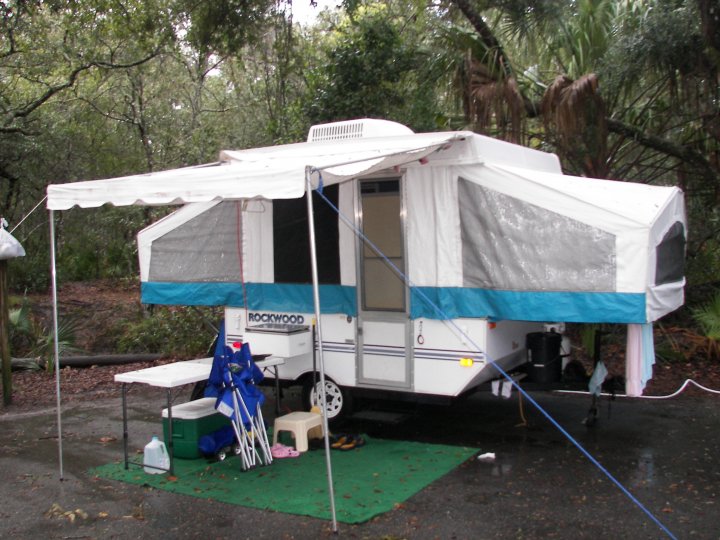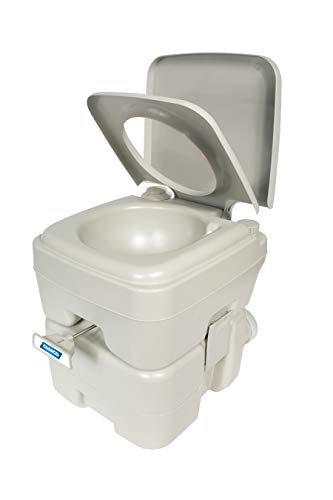Pop up campers are a fantastic option for someone who wants to get into camping as a beginner, without spending a large sum on an RV.
In this post, we’ll cover the key pros and cons of pop up campers and what you need to know before you buy. These are the most important factors to consider when deciding to purchase a pop-up camper.
If you want to read more about pop up campers, with all the extra details, check out the post below.
Related: 31 Things You MUST Know Before Buying A Pop-Up Tent Trailer
Pros
These are the top advantages of owning a pop up camper.
1. You Can Get a Pop Up for a Great Price
Hands down, pop-ups are one of the most affordable types of campers you can buy. The average pop up camper costs between $10,000 to $20,000 new.
Or you can get a used one for under $10,000. You can even find small pop up campers used for as low as $2,500.
Not only that, but pop-ups have a lightweight design with lower fuel costs when it comes to towing and traveling on the road.
2. Almost Any Vehicle Can Tow a Pop Up
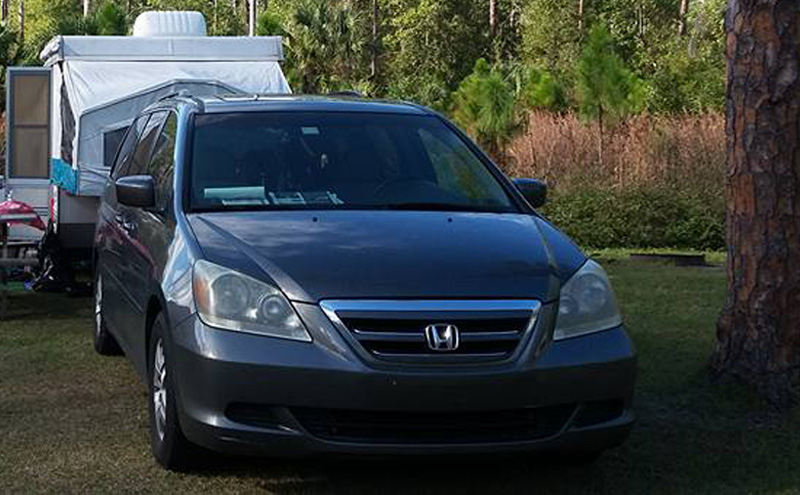
Speaking about towing, almost any vehicle can tow a pop-up camper. We towed our Rockwood Freedom pop up camper with a 2007 Honda Odyssey that has a towing capacity of 3500 lbs.
With the average pop up camper weight at about 2,000 lbs, you’ll have plenty of additional room for carrying gear, cargo, liquids, and passengers.
3. You Still Get Air Conditioning
Depending on what state you live in or travel to, having or not having air conditioning during certain parts of the year can be very important.
Down here in Florida, air conditioning is a MUST HAVE for about 80% of the year. Some pop up campers do not come with AC if you live in the north where it doesn’t get as hot. You can always install an AC unit on your pop up camper at a later date.
From my experience in the heat of the Florida summer, our AC unit in the pop up actually worked better than some of our travel trailer friends. It really depends on the amount of BTUs (British thermal units) the AC has, as well as it’s size and condition.
4. Easier Driving with a Lightweight Trailer
Not only do you get better gas mileage and fuel efficiency with a pop up camper, but it’s also easier to drive.
When the trailer is popped down you can still see over the back for the most part when on the road. In addition, this makes maneuvering on the interstate with a shorter and more compact trailer less difficult.
Another benefit of a small lightweight trailer like a pop up is that it’s easier to back up onto the campsite. Often you’ll see couples with walkie talkies backing in big rig RVs and fifth wheels for a much longer time.
5. You Can Store a Pop Up in Your Garage
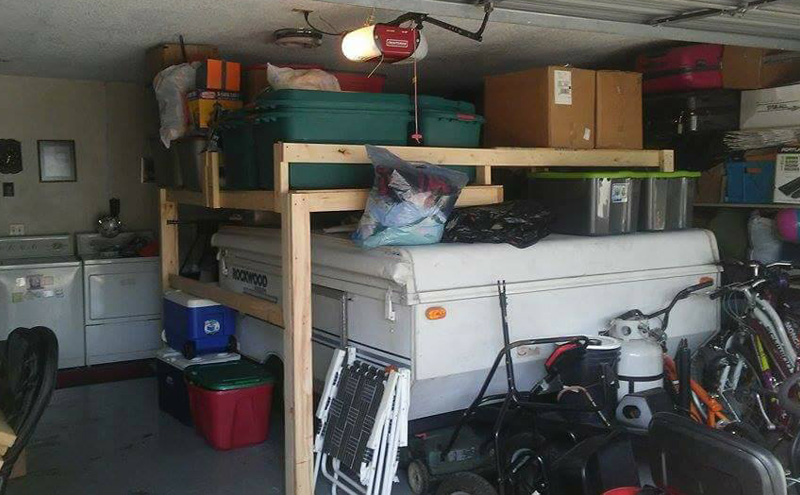
Most pop-ups pop down to such a small size that you can store it in your garage! Or if you don’t want to park it in your garage (or don’t have space) you can hide it behind your fence popped down if you’re in a neighborhood with an HOA.
Either way, this means you can save on the cost of renting a spot at an RV and boat storage lot. These prices range anywhere from $30 to $50 a month for outdoor storage or more for indoor RV storage costs. After upgrading to a travel trailer this is an added monthly payment to consider in your budget that a pop-up camper saves on.
Cons
As great as pop up campers can be, it’s essential to know the challenges and downsides you may face.
6. Few Pop-Ups Have a Bathroom
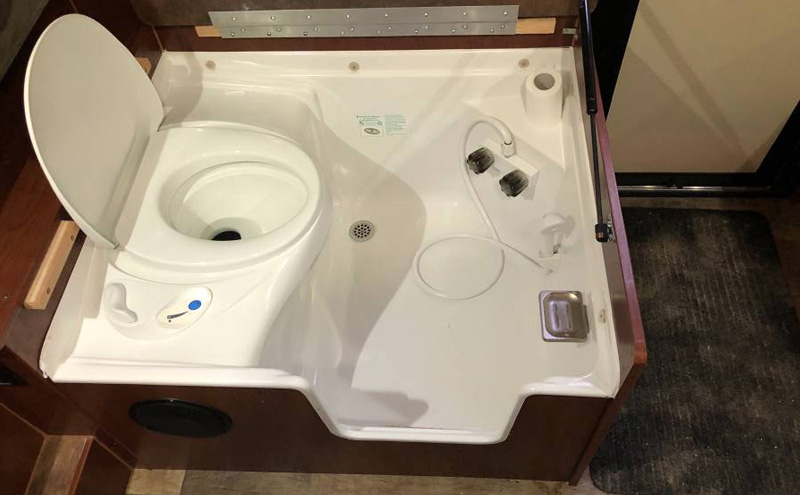
If you’re lucky enough to find a pop up camper for the right price that comes with a bathroom, this is what they’ll look like. The reality is that most pop ups do not come with a toilet or shower.
Pop-ups do still have running water and a sink. However, for the bathroom, you’ll have to either purchase a portable toilet or use the campground restroom.
A portable toilet such as this one by Camco is not a bad option and works great:
7. Setup Time Can Get Frustrating
It’s no secret that in order to use a pop up camper you have to actually pop it up and down. While this may sound like a piece of cake, this actually takes a decent bit of work.
In addition to connecting water, electric, and maybe sewer with any camper, a pop up also requires cranking up the roof, pulling out beds, and loading all your stuff (since you have less storage space inside the trailer).
All of this adds a lot of time when you arrive at your campsite and when you pack up to leave. In comparison to other RVs and campers where you park, hook up a few lines, and you’re done.
8. Additional Tent Care with Rain
After rain you’ll need to air out the canvas and tent material before closing up. This is important to prevent and avoid moisture buildup which causes mildew. It’s a frustrating additional step, but it’s crucial to ensure your pop up lasts for a while.
If it rains a lot during a trip or when you’re leaving the campground, you can pop down for the drive home and then dry it out in your driveway.
9. Limited Space and Accommodations
The inside of a pop up camper has less room than most other campers or RVs. While this is not always the case, it’s typically true.
This means navigating around inside may be a bit difficult with camping gear and more people. Pop ups can sleep 4 to 5 people, yet may not be the best option for those with larger families.
To Conclude
A pop up camper may be your best choice for a camper if you want to get the benefits of an RV without as much cost. These trailers hitch up to most vehicles without a problem.
However, it is more time consuming to set up and use. You also have smaller beds, less of a bathroom, and less kitchen.
If you can get past those factors, you can hit the road without the stress of driving around a big rig RV.

